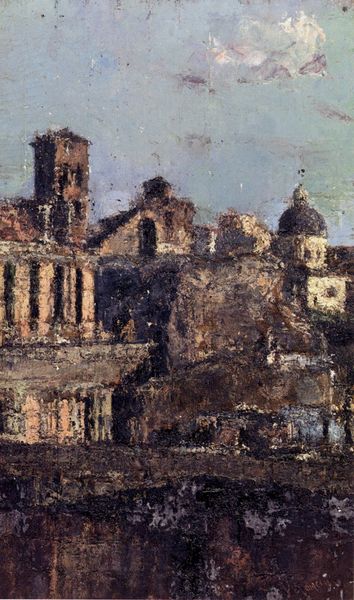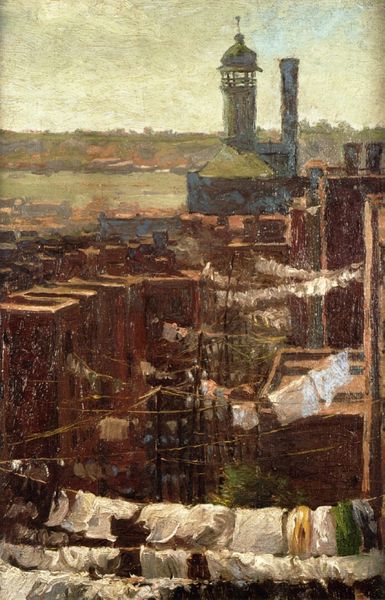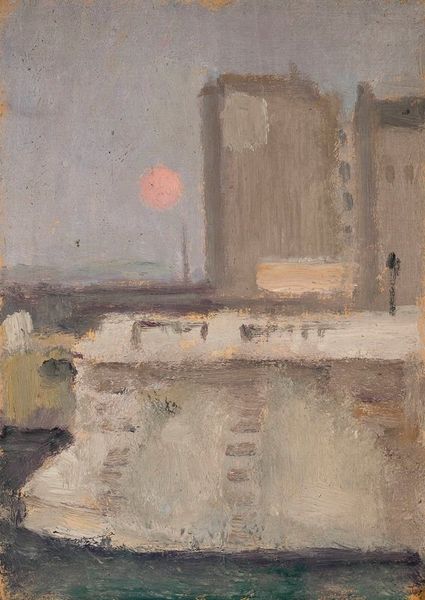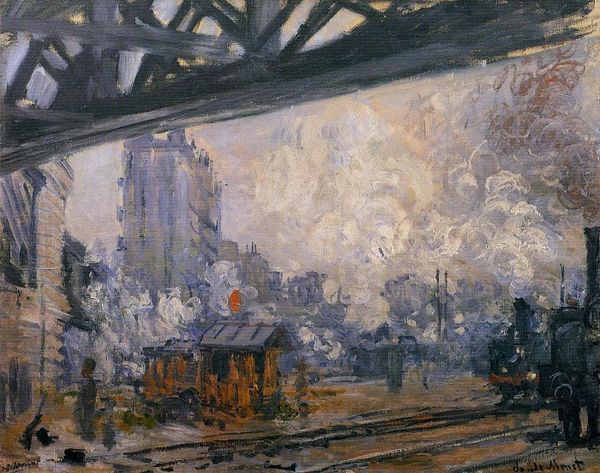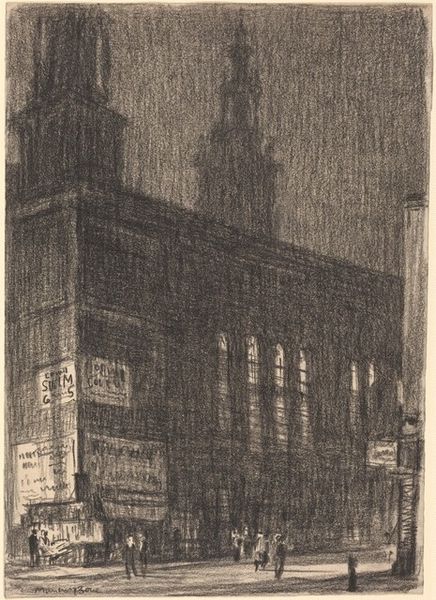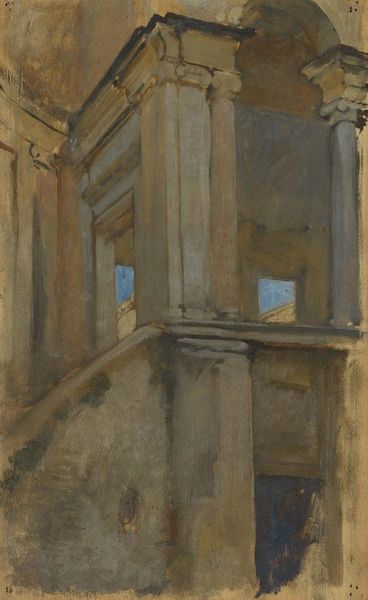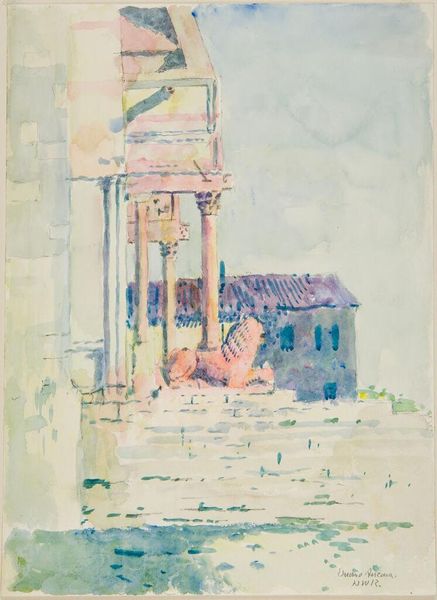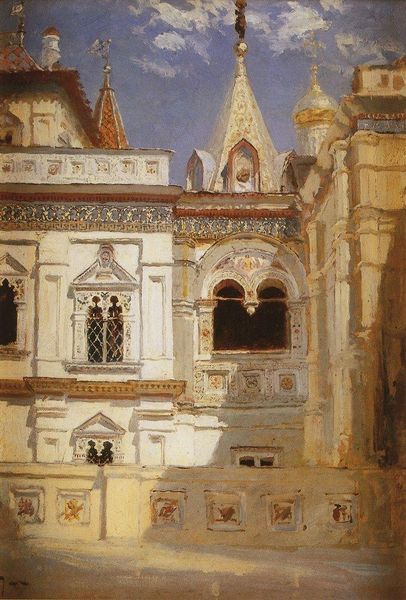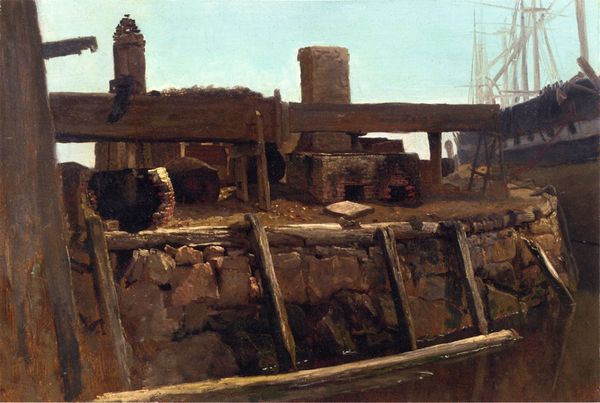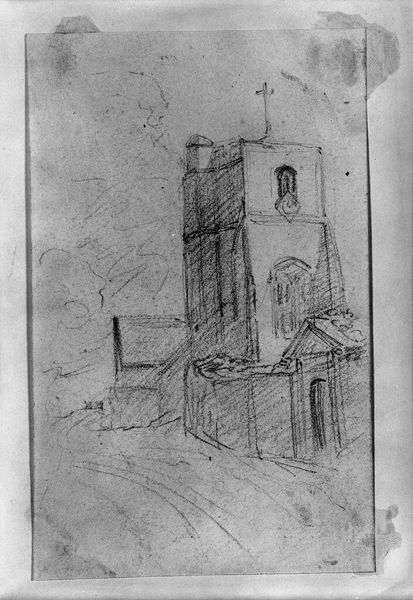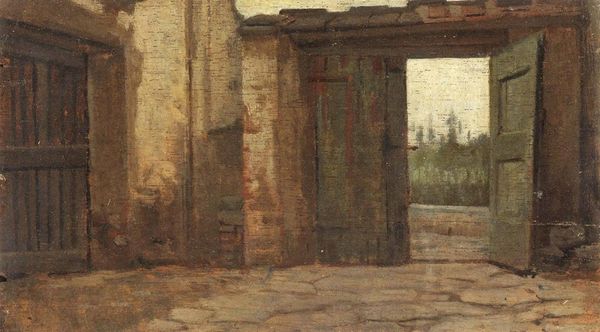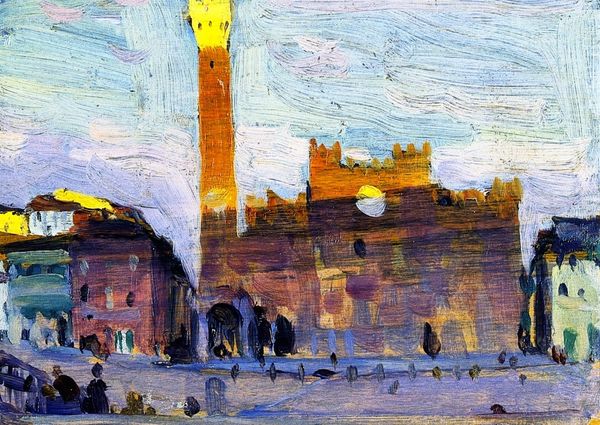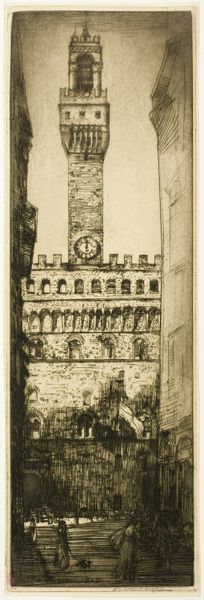
tempera, painting, oil-paint
#
tempera
#
painting
#
impressionism
#
oil-paint
#
oil painting
#
city scape
#
france
#
cityscape
#
post-impressionism
Copyright: Public domain
Albert Dubois-Pillet created this painting of the Towers of Saint-Sulpice using oil on canvas. The hazy atmosphere and methodical application of paint give the picture an air of calm detachment. Painted in Paris, likely in the late 1880s, the subject of the artwork embodies the institutional power of the Catholic Church, with the towers dominating the Parisian skyline. But the artist seems less interested in the Church’s authority, and more with the urban context in which it exists. We see the towers beyond a series of buildings, chimneys, and rooftops. This reflects how modern life had come to overshadow the church's influence. Dubois-Pillet was an officer in the French army, and his position gave him a certain social status. However, his involvement with the Société des Artistes Indépendants, an alternative exhibiting society, put him at odds with the established art world and its institutions. To understand the artist’s intentions, one must consider the social and institutional context. Historical archives, exhibition records, and artists’ correspondence are invaluable resources for unraveling the complex relationship between art and society.
Comments
No comments
Be the first to comment and join the conversation on the ultimate creative platform.
